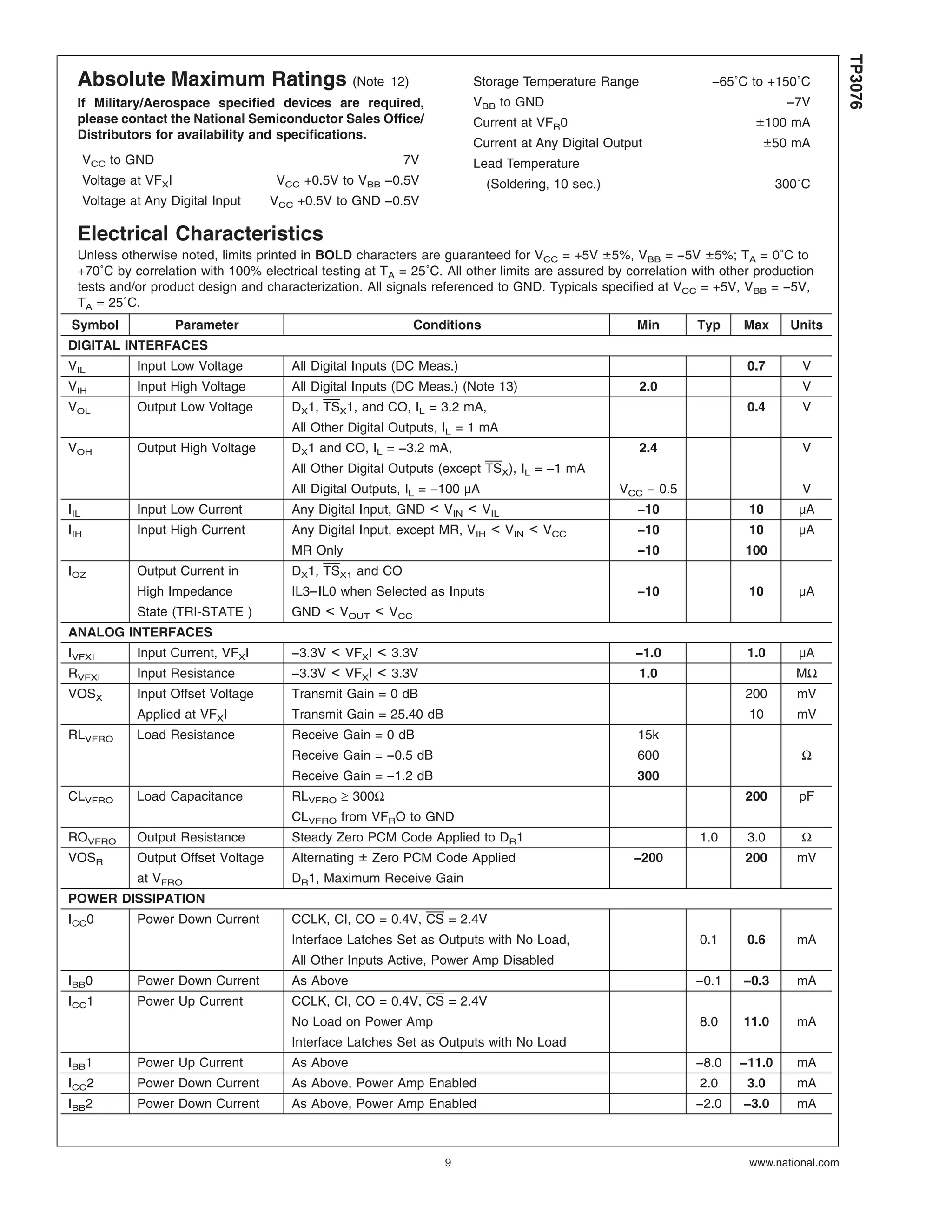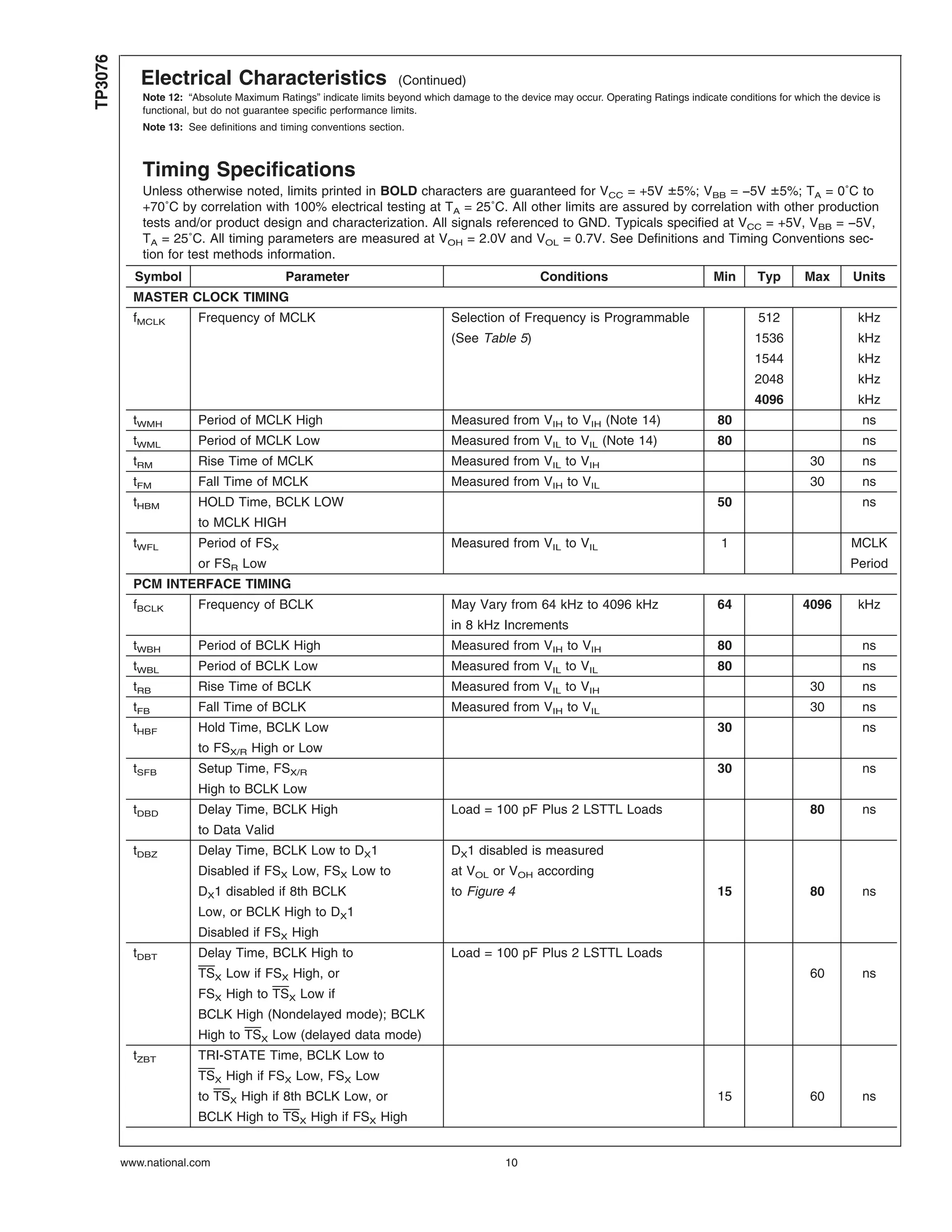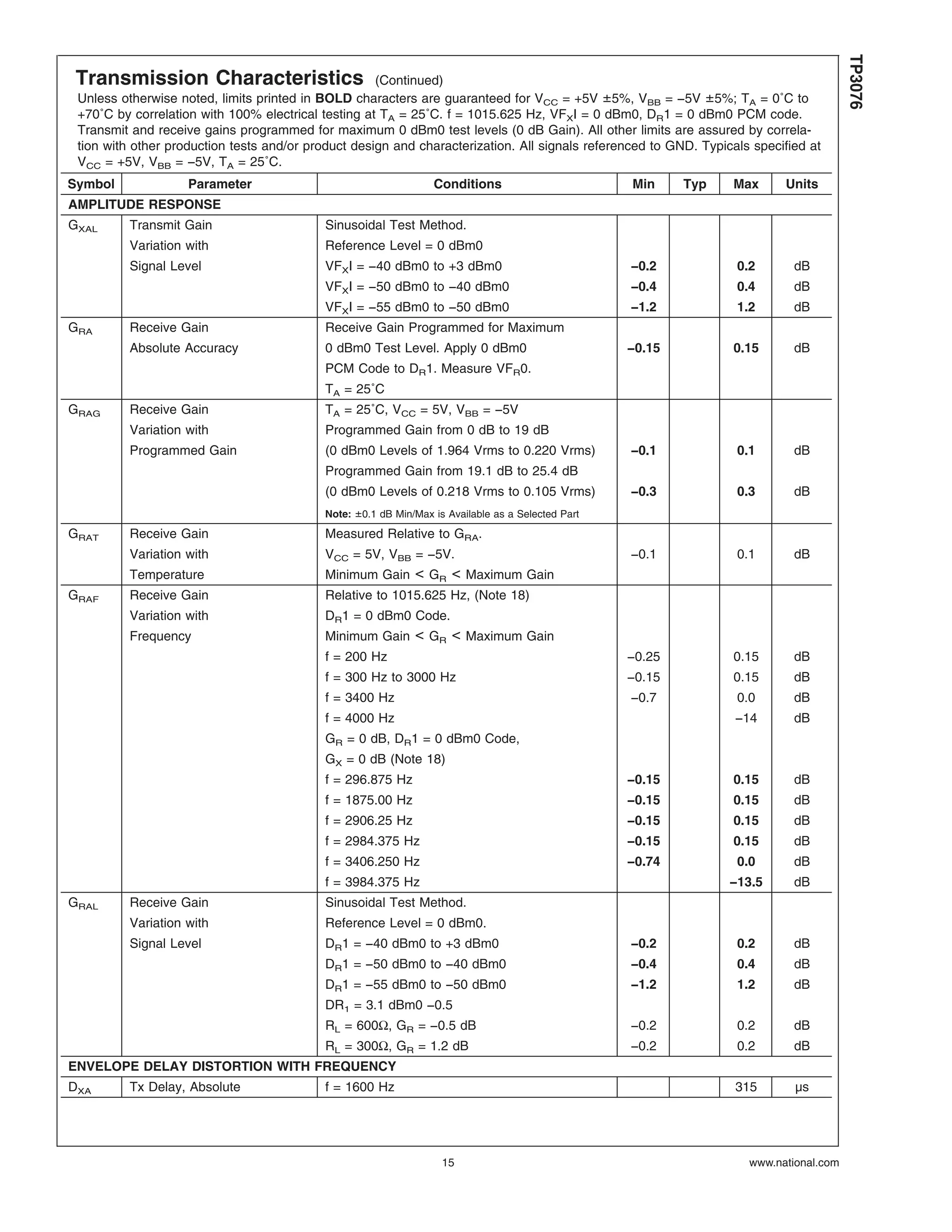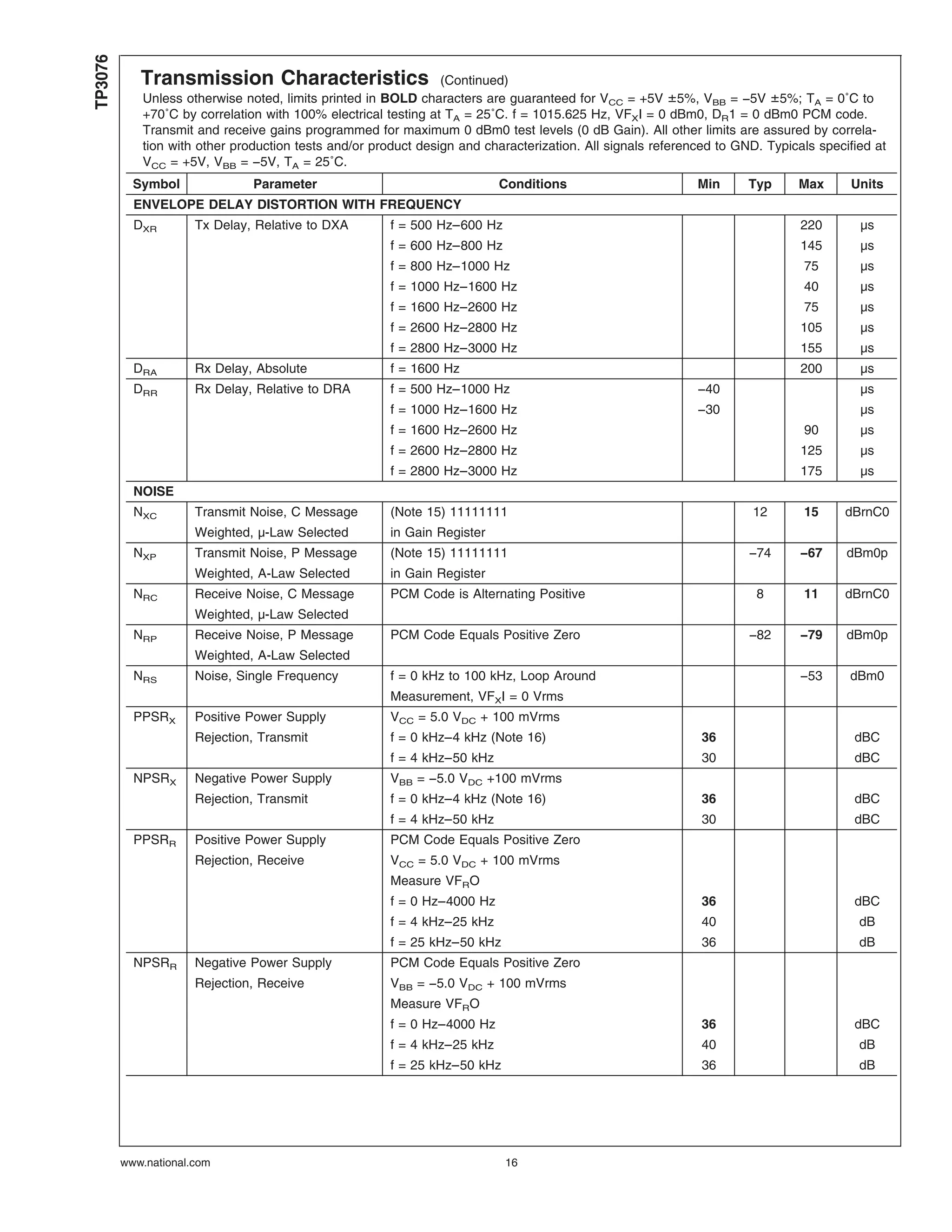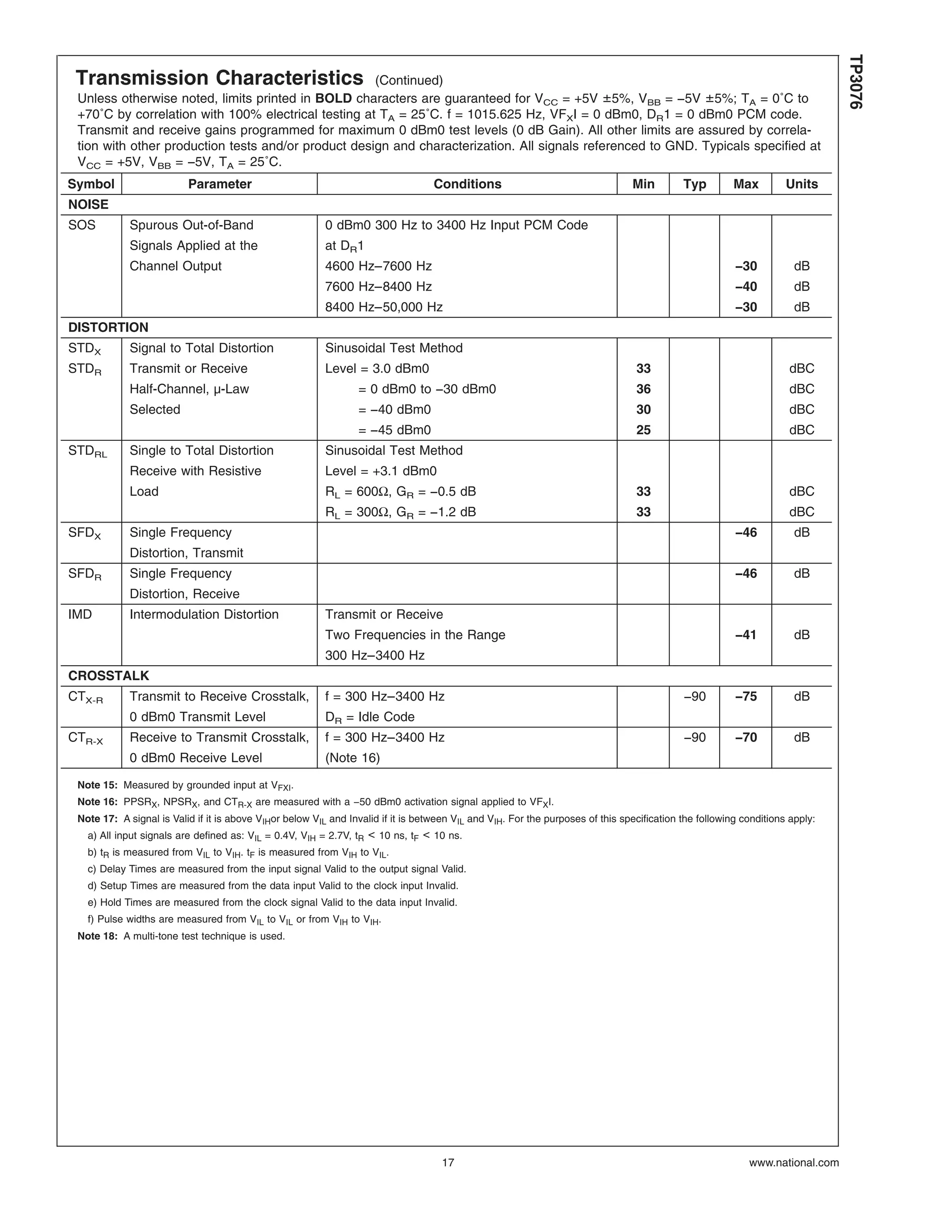The TP3076 is a programmable PCM CODEC/filter chip optimized for digital switching applications and digital phones. It combines transmit and receive filters with an encoder, decoder, and programmable functions like gain control. It interfaces with solid-state subscriber line interface circuits (SLICs) and has a serial control interface for programming functions like gain, time slot assignment, and interface latch configuration.








